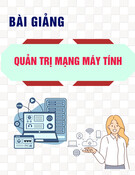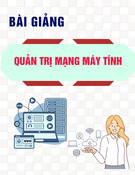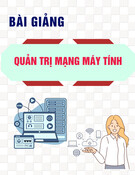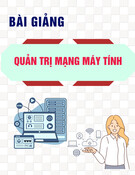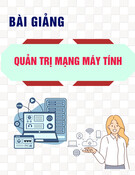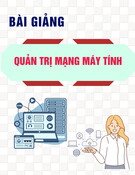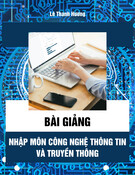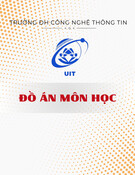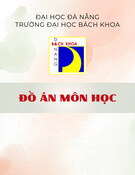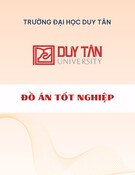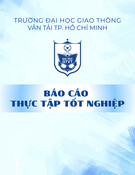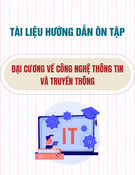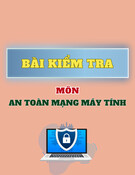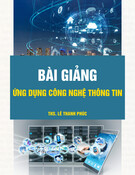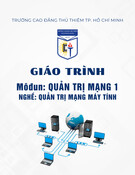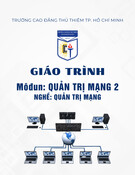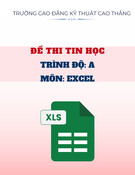1828xbook.fm Page 563 Thursday, July 26, 2007 3:10 PM
Part V: Final Preparation
Chapter 18 Final Preparation
1828xbook.fm Page 564 Thursday, July 26, 2007 3:10 PM
1828xbook.fm Page 565 Thursday, July 26, 2007 3:10 PM
C H A P T E R 18
Final Preparation
The first 17 chapters of this book cover the technologies, protocols, commands, and features you need to understand to pass the ICND2 exam. Although these chapters supply the detailed information, most people need more preparation than simply reading the first 17 chapters. This chapter details a set of tools and a study plan to help you complete your preparation for the exams.
If you’re preparing for the CCNA exam by reading both this book and the CCNA ICND2 Official Exam Certification Guide, you know that both books have a final preparation chapter. However, you can refer to just this chapter to read about the suggested study plan, because this chapter refers to the tools in both this book and the ICND2 book. Just look for the text highlighted in gray, like this sentence, for suggestions that apply to CCNA (640-802) exam preparation, but not to ICND1 (640-816) exam preparation.
This short chapter has two main sections. The first section lists the exam preparation tools that can be useful at this point in your study process. The second section lists a suggested study plan now that you have completed all the earlier chapters.
NOTE This chapter refers to many of the book’s chapters and appendixes, as well as tools available on the CD. Some of the appendixes, beginning with Appendix D, are included only on the CD that comes with this book. To access those, just insert the CD and make the appropriate selection from the opening interface.
Tools for Final Preparation
This section lists some information about the available tools and how to access them.
Exam Engine and Questions on the CD
The CD includes an exam engine—software that displays and then grades a set of exam- realistic questions. These include simulation (sim) questions, drag-and-drop, and many scenario-based questions that require the same level of analysis as the questions on the ICND1 and CCNA exams. Using the exam engine, you can either practice with the questions in Study Mode or take a simulated (timed) ICND1 or CCNA exam.
1828xbook.fm Page 566 Thursday, July 26, 2007 3:10 PM
566 Chapter 18: Final Preparation
The installation process has two major steps. The CD includes a recent copy of the exam engine software, supplied by Boson Software (http://www.boson.com). The practice exam—the database of ICND1 exam questions—is not on the CD. Instead, the practice exam resides on the http://www.boson.com web server, so the second major step is to activate and download the practice exam.
NOTE The cardboard CD case in the back of this book includes the CD and a piece of paper. The paper lists the activation key for the practice exam associated with this book. Do not lose the activation key.
Install the Software from the CD
The software installation process is pretty routine as compared with other software installation processes. The following steps outline the process:
Step 1 Insert the CD into your PC.
Step 2 The software that automatically runs is the Cisco Press software to access and use all CD-based features, including the exam engine, viewing a PDF file of this book, and viewing the CD-only appendixes. From the main menu, click the option to Install the Exam Engine.
Step 3 Respond to prompt windows, as you would with any typical software
installation process.
The installation process might give you the option to register the software. This process requires that you establish a login at the http://www.boson.com website. You will need this login to activate the exam, so feel free to register when prompted. If you already have a login at the http://www.boson.com site, you don’t need to register again. Just use your existing login.
Activate and Download the Practice Exam
After the exam engine is installed, you should activate the exam associated with this book:
Step 1 Start the Boson Exam Environment (BEE) software from the Start menu. It should
be installed in a Cisco Press folder on your computer.
Step 2 The first time you start the software, it should ask you to either log in or register an account. If you do not already have an account with Boson, select the option to register a new account. (You must register to download and use the exam.)
Step 3 After you are registered, the software might prompt you to download the latest version of the software, which you should do. Note that this process updates the exam engine software (formally called the Boson Exam Environment). It doesn’t activate the practice exam.
1828xbook.fm Page 567 Thursday, July 26, 2007 3:10 PM
Tools for Final Preparation 567
Step 4 To activate and download the exam associated with this book, from the
exam engine main window, click the Exam Wizard button.
Step 5 From the Exam Wizard pop-up window, select Activate a purchased exam and click the Next button. (Although you did not purchase the exam directly, you purchased it indirectly when you purchased this book.)
Step 6 On the next screen, enter the Activation Key from the paper inside the
cardboard CD holder, and click the Next button.
Step 7 The activation process downloads the practice exam. When this is done, the main exam engine menu should list a new exam, with a name such as “ExSim for Cisco Press ICND1 ECG.” If you do not see the exam, be sure you have selected the My Exams tab on the menu. You may need to click the plus sign icon (+) to expand the menu and see the exam.
At this point, the software and practice exam are ready to use.
Activating Other Exams
You need to go through the exam software installation process and the registration process only once. After that, for each new exam, only a few steps are required. For instance, if you bought both this book and the CCNA ICND2 Official Exam Certification Guide, you could follow the steps just listed to install the software and activate the exam associated with this book. Then, for the practice exam associated with the ICND2 book, which has about 150 exam-realistic ICND2 questions, you need to follow only a few more steps. All you have to do is start the Boson exam environment (if it is not still up and running) and follow Steps 4 through 6 in the preceding list. In fact, if you purchase other Cisco Press books, or purchase a practice exam from Boson, you just need to activate each new exam as described in Steps 4 through 6.
You can also purchase additional practice exams from Boson directly from its website. When you purchase an exam, you receive an activation key, and then you can activate and download the exam—again without requiring any additional software installation.
The Cisco CCNA Prep Center
Cisco provides a wide variety of CCNA preparation tools at a Cisco Systems website called the CCNA Prep Center. The CCNA Prep Center includes demonstrations of the exam’s user interface, sample questions, informational videos, discussion forums, and other tools.
To use the CCNA Prep Center, you need a registered login at http://www.cisco.com. To register, simply go to http://www.cisco.com, click Register at the top of the page, and supply some information. (You do not need to work for Cisco or one of its partners to get a login.)
1828xbook.fm Page 568 Thursday, July 26, 2007 3:10 PM
568 Chapter 18: Final Preparation
After you have registered, proceed to http://www.cisco.com/go/prepcenter, and look for the link to the CCNA Prep Center. There you can log in and explore the many features.
Subnetting Videos, Reference Pages, and Practice Problems
Being able to analyze the IP addressing and subnetting used in any IPv4 network may be the single most important skill for all the CCNA exams. This book’s Chapter 12, “IP Addressing and Subnetting,” covers most of those details. The ICND2 book’s Chapter 5, “VLSM and Route Summarization,” adds to the puzzle by explaining VLSM.
■
This book includes several tools to help you practice and refine your subnetting skills:
■
Subnetting reference pages: CD-only Appendix E, “Subnetting Reference Pages,” summarizes the binary and decimal shortcut processes explained in Chapter 12. Each reference page lists a single process related to subnetting, along with reference information useful for that process. These summarized processes may be a more convenient tool when you’re practicing subnetting, as compared to flipping pages in the subnetting chapters, looking for the correct process.
■
Subnetting videos: The DVD included with this book has a series of subnetting videos. These videos show you how to use the shortcut processes to find the answers to popular subnetting questions. You can select and play the videos from a simple menu that starts when you insert the DVD into a DVD drive.
Subnetting practice: CD-only Appendix D, “Subnetting Practice,” contains a variety of subnetting practice problems, including 25 problems for which you need to find the subnet number, subnet broadcast address, and range of valid IP addresses. This appendix shows you how to use both binary and shortcut processes to find the answers.
Scenarios
As mentioned in the Introduction to this book, some of the exam questions require you to use the same skills commonly used to troubleshoot problems in real networks. The troubleshooting sections and chapters of both the ICND1 and ICND2 books help prepare you for those kinds of questions.
Another way to prepare for troubleshooting questions on the exams is to think through many different network scenarios, predicting what should occur, and investigating whether the network is performing as it should. Appendix F, “Additional Scenarios,” in both books includes some tasks that you should attempt before reading the suggested solutions listed later in the appendix. By reading these scenarios and doing the exercises, you can practice some of the skills required when analyzing and troubleshooting networks.
1828xbook.fm Page 569 Thursday, July 26, 2007 3:10 PM
Study Plan 569
Study Plan
You could simply study using all the available tools, as mentioned earlier in this chapter. However, this section suggests a particular study plan, with a sequence of tasks that may work better than just using the tools randomly. However, feel free to use the tools in any way and at any time that helps you fully prepare for the exam.
If you are preparing for only the ICND1 exam, you can ignore the gray highlighted portions of this study plan. If you are studying for the CCNA exam by using the ICND2 book as well, include the tasks highlighted in gray.
■ Recall the facts. Activities that help you remember all the details from the first
The suggested study plan separates the tasks into four categories:
■
17 chapters of this book.
■ Build troubleshooting skills using scenarios. To answer some exam questions that present a scenario, you may need to recall facts, do subnetting math quickly and accurately, and use a hands-on simulator—all to answer a single question. This plan section suggests activities that help you pull together these different skills.
■ Use the exam engine to practice realistic questions. You can use the exam engine on
Practice subnetting. You must master subnetting to succeed on the ICND1, ICND2, and CCNA exams. This category lists the items you can use to practice subnetting skills.
the CD to study using a bank of unique exam-realistic questions available only with this book.
Recall the Facts
As with most exams, you must recall many facts, concepts, and definitions to do well on the test. This section suggests a couple of tasks that should help you remember all the details:
Step 1 Review and repeat, as needed, the activities in the “Exam Preparation Tasks”
section at the end of each chapter. Most of these activities help you refine your knowledge of a topic while also helping you memorize the facts. For CCNA exam preparation, do this for Chapters 2 through 17 in this book as well as Chapters 1 through 17 in the ICND2 book.
Step 2 Review all the “Do I Know This Already?” quiz questions at the beginning of the chapters. Although the questions may be familiar, reading through them again will help improve your recall of the topics covered in the questions. Also, the DIKTA questions tend to cover the most important topics from the chapter, and it never hurts to drill on those topics.
1828xbook.fm Page 570 Thursday, July 26, 2007 3:10 PM
570 Chapter 18: Final Preparation
Practice Subnetting
Without question, absolutely the most important skill you need to succeed in passing the ICND1, ICND2, and CCNA exams is to be able to accurately, confidently, and quickly answer subnetting questions. The CCNA exams all have some element of time pressure; the most stressful questions are the sim, simlet, and subnetting questions. So, you should practice subnetting math and processes until you can consistently find the correct answer in a reasonable amount of time.
Before I suggest how you should prepare for subnetting questions, please note that there are many alternative methods for finding the answers to subnetting questions. For example, you can use binary math for all 32 bits of the addresses and subnet numbers. Alternatively, you could recognize that 3 of the 4 octets in most subnetting problems are easily predicted without binary math, and then use binary math in the final interesting octet. Another option would be to use decimal shortcuts. (This topic is covered in this book’s Chapter 12, which is included in the ICND2 book’s Appendix H.) Shortcuts require no binary math but do require you to practice a process until you’ve memorized it. You can even use variations on these processes as taught in other books or classes.
Whichever process you prefer, you should practice it until you can use it accurately, confidently, and quickly.
The following list of suggested activities includes practice activities that you can use regardless of the process you choose. In some cases, this list includes items that help you learn the shortcuts included with this book:
Step 1 View or Print Appendix E, “Subnetting Reference Pages.” This short CD-only appendix includes a series of single-page summaries of the subnetting processes found in Chapter 12. Appendix E includes reference pages that summarize both the binary and decimal shortcut subnetting processes.
Step 2 Watch the subnetting videos found on the CCNA video DVD found in the
back of this book. These videos show examples of how to use some of the more detailed shortcut processes to help ensure that you know how to use the processes. CCNA exam candidates: The subnetting videos are on DVDs included with both books. They are identical, so you can watch the videos from either DVD.
Step 3 View or print Appendix D, “Subnetting Practice.” This CD-only appendix
includes enough subnetting practice problems so that, through repetition, you can significantly improve your speed and internalize the shortcut processes. Plan on working on these problems until you can consistently get the right answer, quickly, and you no longer have to sit back and think about the process for finding the answer. The goal is to make the process of finding the answers to such
1828xbook.fm Page 571 Thursday, July 26, 2007 3:10 PM
Study Plan 571
problems automatic. CCNA exam candidates: The ICND2 Appendix D contains all the problems from ICND1’s Appendix D, plus a few others, so use ICND2’s Appendix D.
Step 4 Practice subnetting with Cisco’s subnetting game. Cisco has a subnetting game, available at the Cisco CCNA Prep Center. It prompts you with various subnetting scenarios and makes practicing subnetting fun. Just go to the CCNA Prep Center (http://www.cisco.com/go/prepcenter), log in with your Cisco.com User ID, select the Additional Information tab, and look for the link to download the game. (If you do not have a login, you can establish one from this web page.)
Step 5 Develop your own practice problems using a subnet calculator. You can
download many free subnet calculators from the Internet, including one available from Cisco as part of the CCNA Prep Center. You can make up your own subnetting problems like those in Appendix D, do the problems, and then test your answers by using the subnet calculator.
Build Troubleshooting Skills Using Scenarios
■ Review the scenarios included in Appendix F of this book. These scenarios make you think about issues covered in multiple chapters of the book. They also require more abstract thought to solve the problem. CCNA exam candidates should review the scenarios in Appendix F of both books.
Just as a real problem in a real network may be caused by a variety of issues—a routing protocol, a bad cable, spanning tree, an incorrect ACL, or even errors in your documentation about the internetwork—the exam makes you apply a wide range of knowledge to answer individual questions. The one activity for this section is as follows:
Use the Exam Engine
■
The exam engine includes two basic modes:
■
Study mode is most useful when you want to use the questions to learn and practice. In study mode, you can select options such as whether you want to randomize the order of the questions, randomize the order of the answers, automatically see the answers, refer to specific sections of the text that reside on the CD, and many other options.
Simulation mode presents questions in a timed environment, providing you with a more exam-realistic experience. However, it restricts your ability to see your score as you progress through the exam, view the answers as you are taking the exam, and refer to sections of the text. These timed exams not only allow you to study for the actual ICND1 and CCNA exams, they also help you simulate the time pressure of the actual exam.
1828xbook.fm Page 572 Thursday, July 26, 2007 3:10 PM
572 Chapter 18: Final Preparation
Choosing Study or Simulation Mode
Both study mode and simulation mode are useful for preparing for the exams. It’s easy to choose one of the modes from the exam engine’s user interface. The following steps show you how to move to the screen where you select study or simulation mode:
Step 1 Click the Choose Exam button. The exam should be listed under the title ExSim
for Cisco Press ICND1 ECG.
Step 2 Click the exam’s name to highlight it.
Step 3 Click the Load Exam button.
The engine should display a window. Here you can choose Study Mode or Simulation Mode using the radio buttons.
Choosing the Right Exam Option
■
The exam engine has many options. You need to choose from one of the three listed exams on the left side of the window, and select either simulation or study mode. Additionally, depending on these two choices, you can potentially modify many other small settings. Although this is a useful tool, it can be difficult to figure out which options to choose to perform the following four primary tasks:
■
Study for the ICND1 exam
■
Study for the CCNA exam
■
Simulate the ICND1 exam
Simulate the CCNA exam
To support the ability to study for and simulate both the ICND1 and CCNA exams, the practice test includes two separate question banks. The first bank includes about 150 unique questions written specifically for the ICND1 exam. The second bank includes a subset of the ICND2 question bank written for the CCNA ICND2 Official Exam Certification Guide.
■ Cisco ICND1 Exam: ICND1 questions only
■ Custom Exam: ICND1 questions only
■
When studying for or simulating the CCNA exam, you have to choose an option that includes both the ICND2 and ICND1 questions. To study for or simulate the ICND1 exam, you need to choose an exam option that includes only ICND1 questions. The following list outlines the three options on the menu and the questions served by the exam engine for each choice:
Full CCNA Exam: Both ICND1 and ICND2 questions
1828xbook.fm Page 573 Thursday, July 26, 2007 3:10 PM
Summary 573
You might want to experiment with some of the options. After you have chosen to either study using these questions or simulate an exam, Table 18-1 lists the four main options, along with how to pick the right options from the user interface.
Table 18-1 Directions for What to Choose from the Menu to Study or Simulate the Exam
If you want to:
. . . choose this exam:
. . . and this mode:
. . . and modify these additional settings:
Study for ICND1
Cisco ICND1 CD Exam
Study
No specific settings are required.
Simulate ICND1
Custom Exam
—
Select the timed exam option, 55 questions, 75 minutes. Deselect Show current score during exam, and select Never under Show answers and explanations.
Study for CCNA
Full CCNA Exam
Study
No specific settings are required.
Simulate CCNA
Full CCNA Exam
Simulation
No specific settings are required.
In addition to these main four study options, the custom exam option has a particularly useful feature for exam study. With this option, by clicking the Modify Settings button, you can select the questions to study by chapter. So, if you want to use the question bank for study, and you are studying by chapter or groups of chapters, you can select the questions associated with those chapters.
Summary
The tools and suggestions listed in this chapter were designed with one goal in mind: to help you develop the skills required to pass the ICND1 and CCNA exams. This book, and its companion ICND2 book, were developed not just to tell you the facts, but to help you learn how to apply the facts. No matter what your experience level when you take the exams, it is our hope that the broad range of preparation tools, and even the structure of the books and the focus on troubleshooting, will help you pass the exams with ease. I wish you well on the exams.
1828xbook.fm Page 574 Thursday, July 26, 2007 3:10 PM


